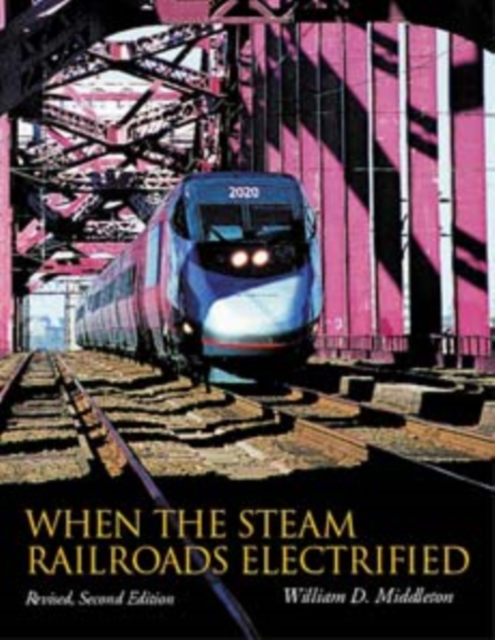
When the Steam Railroads Electrified, Revised Second Edition Hardback
by William D. Middleton
Part of the Railroads Past and Present series
Hardback
Description
This comprehensive history of North American railroad electrification has been out of print for many years.
Now, Indiana University Press is proud to announce its return in an new, updated second edition. For most of the first half of the 20th century the United States led the way in railroad electrification.
Before the outbreak of World War II, the country had some 2,400 route-miles and more than 6,300 track-miles operating under electric power, far more than any other nation and more than 20 percent of the world's total.
In almost every instance, electrification was a huge success.
Running times were reduced. Tonnage capacities were increased. Fuel and maintenance costs were lowered, and the service lives of electric locomotives promised to be twice as long as those of steam locomotives.
Yet despite its many triumphs, electrification of U.S. railroads failed to achieve the wide application that once was so confidently predicted.
By the 1970s, it was the Soviet Union, with almost 22,000 electrified route-miles, that led the way, and the U.S. had declined to 17th place. Today, electric operation of U.S. railroads is back in the limelight. The federally funded Northeast Corridor Improvement Program has provided an expanded Northeast Corridor electrification, with high-speed trains that are giving the fastest rail passenger service ever seen in North America, while still other high-speed corridors are planned for other parts of the country. And with U.S. rail freight tonnage at its highest levels in history, the ability of electric locomotives to expand capacity promises to bring renewed consideration of freight railroad electrification. Middleton begins his ambitious chronicle of the ups and downs of railway electrification with the history of its early days, and brings it right up to the present—which is surely not the end of this complex and mercurial story.
Information
-
Available to Order - This title is available to order, with delivery expected within 2 weeks
- Format:Hardback
- Pages:480 pages, 697 b&w photos, 34 maps
- Publisher:Indiana University Press
- Publication Date:29/03/2002
- Category:
- ISBN:9780253339799
Information
-
Available to Order - This title is available to order, with delivery expected within 2 weeks
- Format:Hardback
- Pages:480 pages, 697 b&w photos, 34 maps
- Publisher:Indiana University Press
- Publication Date:29/03/2002
- Category:
- ISBN:9780253339799










